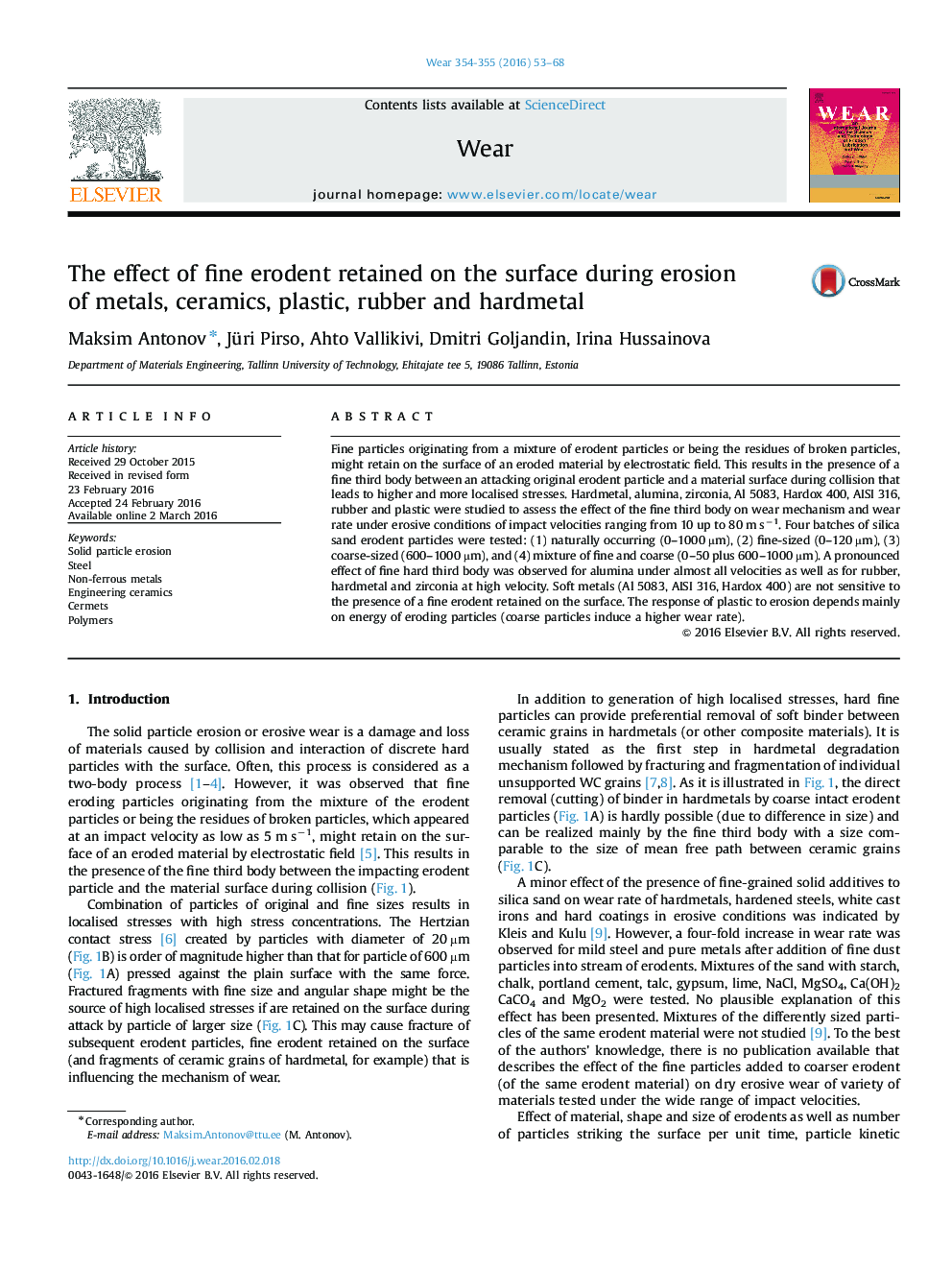| Article ID | Journal | Published Year | Pages | File Type |
|---|---|---|---|---|
| 616952 | Wear | 2016 | 16 Pages |
•Effect of fine third body on dry erosive wear of variety materials is studied.•The wear rates for the velocities from 10 to 80 mps are given.•Four mixtures of erodent particles are used and results are compared.•Alumina has pronounced effect of fine third body and size of eroding particle.•Metals tested are not sensitive to the presence of fine third body.
Fine particles originating from a mixture of erodent particles or being the residues of broken particles, might retain on the surface of an eroded material by electrostatic field. This results in the presence of a fine third body between an attacking original erodent particle and a material surface during collision that leads to higher and more localised stresses. Hardmetal, alumina, zirconia, Al 5083, Hardox 400, AISI 316, rubber and plastic were studied to assess the effect of the fine third body on wear mechanism and wear rate under erosive conditions of impact velocities ranging from 10 up to 80 m s−1. Four batches of silica sand erodent particles were tested: (1) naturally occurring (0–1000 µm), (2) fine-sized (0–120 µm), (3) coarse-sized (600–1000 µm), and (4) mixture of fine and coarse (0–50 plus 600–1000 µm). A pronounced effect of fine hard third body was observed for alumina under almost all velocities as well as for rubber, hardmetal and zirconia at high velocity. Soft metals (Al 5083, AISI 316, Hardox 400) are not sensitive to the presence of a fine erodent retained on the surface. The response of plastic to erosion depends mainly on energy of eroding particles (coarse particles induce a higher wear rate).
